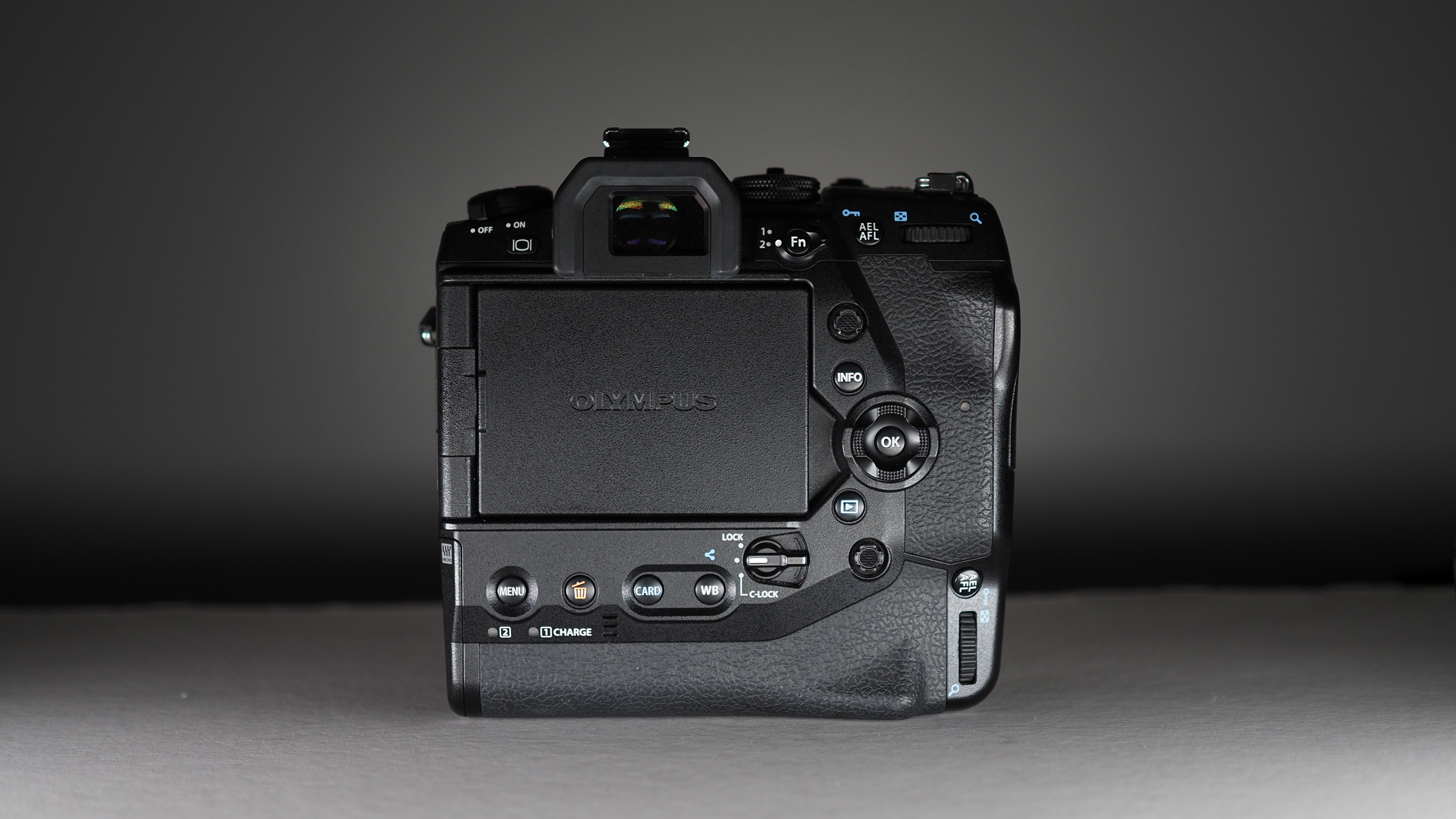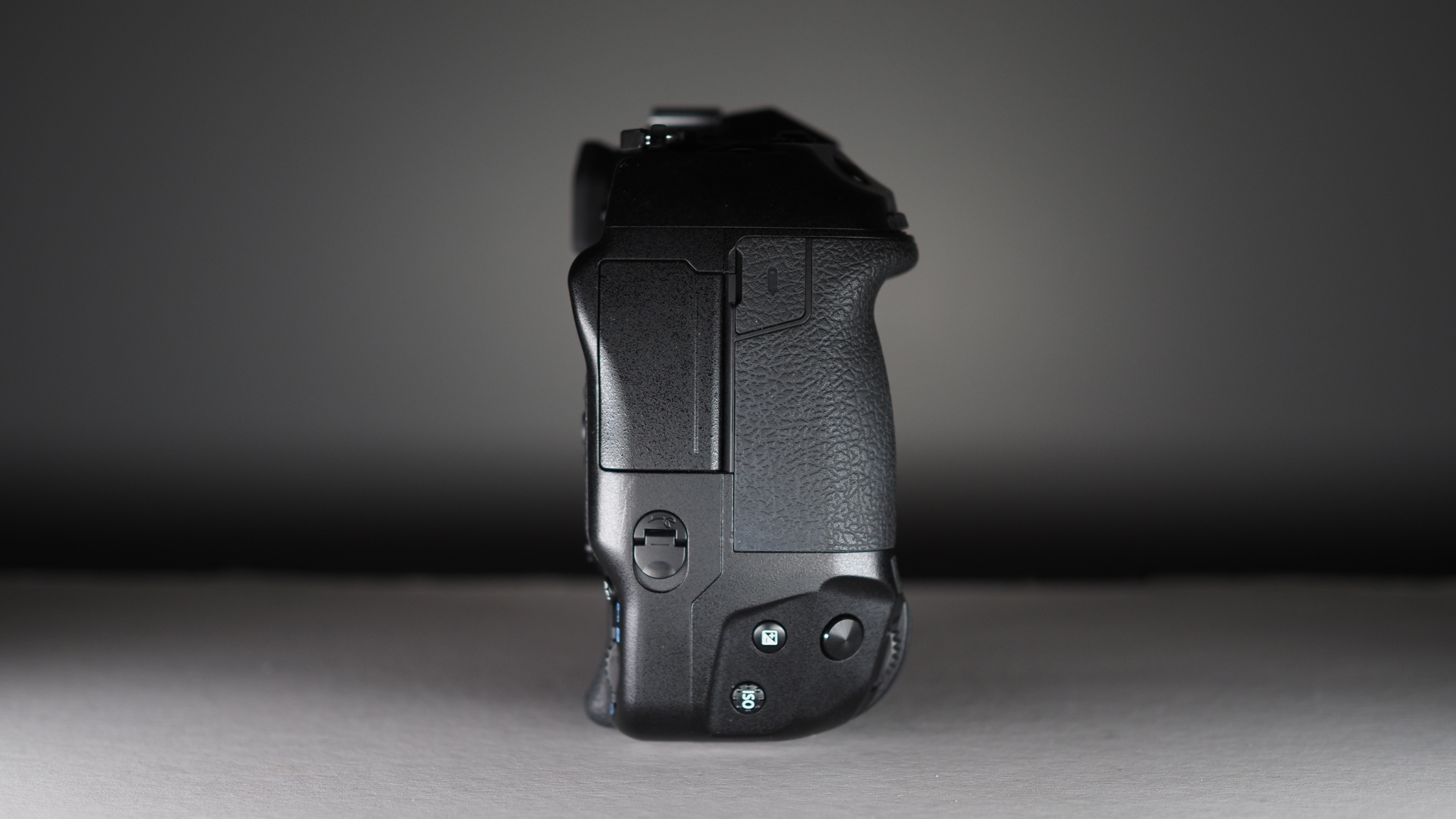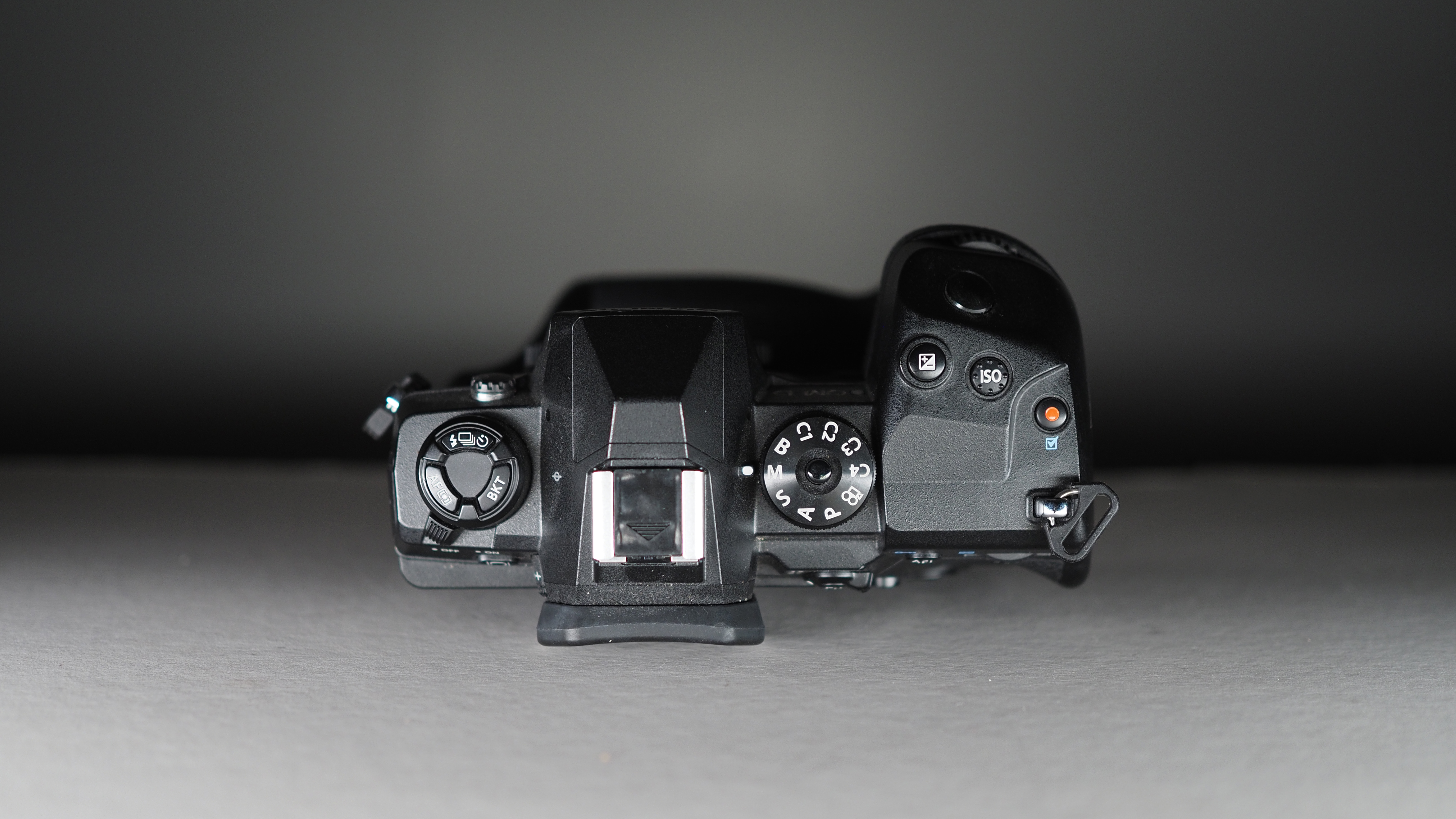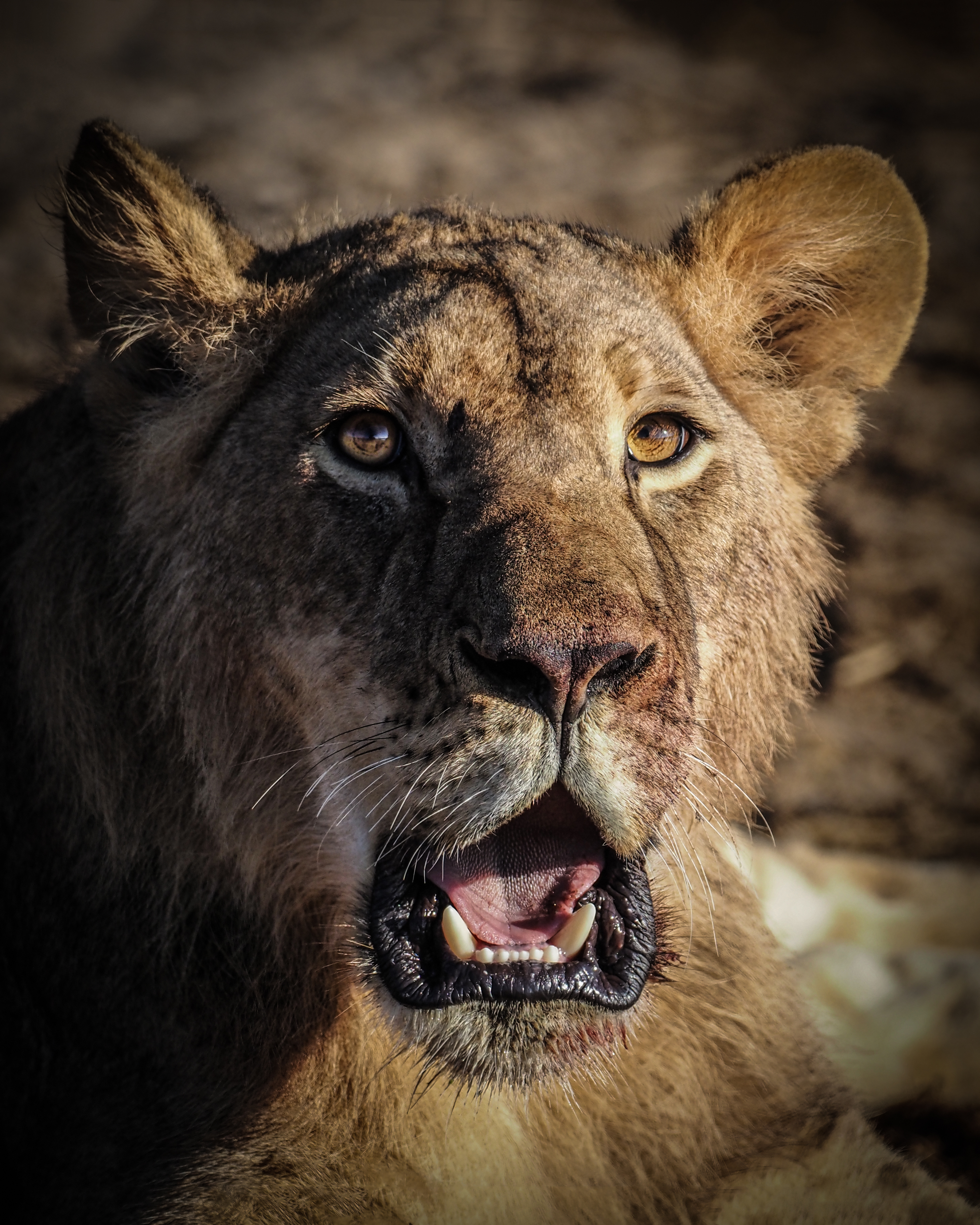Live Science Verdict
With industry-best image stabilization, a focal length-doubling crop factor, and Pro Capture that never misses a shot, the Olympus OM-D E-M1X is a wildlife wonder.
Pros
- +
Up to 60fps bursts
- +
Small, light lenses
- +
Stunning stabilization
Cons
- -
Limited ISO range
- -
Less scope to crop
- -
Deeper depth of field
Why you can trust Live Science
Type: Mirrorless
Sensor: 20.4MP
Mount: Micro Four Thirds
ISO range: 200-25,600
Viewfinder: 2.36 million dots
Video: C4K 24p / 4K 30p / 1080p 120p
Weight: 1.87lbs
Size: 5.69 x 5.78 x 2.97 inches
Memory card: 2x SD
Eyebrows were raised when Olympus (now OM Digital Solutions) debuted the Olympus OM-D E-M1X. Marrying a smaller Micro Four Thirds sensor with a larger, pro DSLR-style body, the E-M1X combines the best of both worlds.
As small as full-frame mirrorless cameras can be, the image circle required to cover larger sensors means that the actual lenses are still as big and bulky as they ever were – not ideal for carrying kit around on safari. However, with a sensor that’s half the size, the Micro Four Thirds format features an ecosystem of lenses that can be as much (or, indeed, as little) as half the size and weight.
That halved sensor size translates to a 2x “crop factor” – which means that the Olympus OM-D E-M1X effectively doubles the focal length of your lenses. So a 300mm lens actually gives you an equivalent 600mm reach – ideal for filling the frame at long range. Moreover, optics for Olympus cameras are considerably more affordable.
So, what’s on offer here is one of the best wildlife cameras: a professional-style body that’s built to balance longer lenses, with a smaller, lighter, more affordable ecosystem of premium glass.
And while its 20.4MP sensor might seem a little light in the resolution stakes, it can capture up to 80MP images thanks to its High Res Shot mode, with blistering burst rates of up to 60fps, staggering stabilization of up to 7.5 stops, and a Pro Capture mode that takes shots before you’ve even clicked the shutter button!
Olympus OM-D E-M1X review: Design
- Pro DSLR style body
- Fully articulating touchscreen
- Industry leading weather sealing
With Micro Four Thirds cameras’ greatest strength being their reduced size, most are thus less suited to professional shooting. The E-M1X solves this issue by offering a larger, professional DSLR-styled body with integrated vertical grip – which also houses two high-capacity batteries, for long-lasting shooting.
Accordingly, you can expect twin shutter buttons, joysticks, and front and rear exposure dials to accommodate portrait and landscape shooting. The camera fits our hands great and handles like a dream for stills and video alike, with the perfect amount of purchase when long wildlife lenses are mounted, and the shutter button has the ideal amount of resistance.
Get the world’s most fascinating discoveries delivered straight to your inbox.
As a pro-grade body, the E-M1X is weather sealed to provide dust, splash and freeze-proofing, meaning you can shoot anywhere. Olympus’ supersonic wave filter (which oscillates at 30,000 per second) repels dust, so you don’t need to worry about changing lenses in tough conditions – something that served us well in the dusty African desert. And with a shutter rated at 400,000 actuations, this truly is a body that’s built to handle serious shooting.
Unlike some other pro and wildlife cameras, the Olympus also boasts a fully articulating touch screen. Not only is this ideal for shooting video, vlogs and other content, it’s also ideal for capturing photographs at high or low angles when you can’t keep your eye to the viewfinder.





Olympus OM-D E-M1X review: Functionality
- 60fps burst shooting
- Pro Capture mode
- Live ND filters
With two processors, the E-M1X – which was until recently the flagship Olympus camera – boasts a host of computational photography features not found on other cameras. For example, Live ND filters; these provide a software-powered alternative to using physical neutral density filters on your lenses, and the effect genuinely does work really well.
The twin processors imbue the camera with the horsepower for advanced subject-detection autofocus algorithms. These specifically recognize and track aircraft, automobiles, birds and trains, but the AF system in general is robust and reliable whether shooting vehicles, human beings or animals.
All that power under the hood enables some other seriously impressive features, our favorite being Olympus’ brilliant Pro Capture mode. When you half press the shutter, the camera starts buffering images; once you fully depress it, it captures the 15 images before you pressed the shutter along with 20 images afterwards.
This means you never miss images by being a split-second too late on the draw, which so often happens on other cameras – and it enabled us to catch incredible shots of animal behavior that we would otherwise have missed.
On top of that, the E-M1X features blistering burst shooting speeds of up to 60fps locked off, or 18fps with full AF and AE. This is all with the silent electronic shutter, too, so we never scare off any twitchy animals (which invariably happens with a DSLR, thanks to the mirror mechanism slapping away).
Olympus OM-D E-M1X review: Performance
- 50 or 80MP stills
- Silky smooth stabilization
- Crisp 4K video
Kit lens: Olympus M.Zuiko 12-40mm f/2.8 Pro
Best wide lens: Olympus M.Zuiko 7-14mm f/2.8 Pro
Best zoom lens: Olympus M.Zuiko 40-150mm f/2.8 Pro
Spare battery type: Olympus BLH-1
Memory card: Lexar Professional Class 10 UHS-II 2000X
Some may scoff that this camera only has a 20.4MP sensor, which is pretty conservative compared to many of its rivals. However, this is more than enough resolution for most printing purposes (and we’ve shot plenty of double-page magazine spreads and cover images with this sensor).
Still, if you’re not satisfied with that pixel count, the Olympus OM-D E-M1X has a couple of tricks up its sleeve. Thanks to its in-body image stabilization system (IBIS, which uses a magnetic field to shift the sensor, compensating for camera shake) the body boasts a High Res Shot mode.
This shifts the sensor up to 16 times to build an in-camera image of 50MP handheld, or 80MP when mounted on a tripod. Both methods take a few seconds to expose, so they’re not appropriate for moving subjects – and the handheld mode can occasionally be a bit hit and miss, depending on the steadiness of your grip. However, the resulting raw files are pixel-packed and dense with detail, giving you medium format resolution at a fraction of the price for those occasions when you need it.
All the shots in this review were shot at the native 20.4MP resolution, so we’ll leave it up to you to decide whether there’s enough detail in them – but we think there is, as did the magazines that printed them. The only area in which the sensor starts to struggle is in low light conditions.
The maximum ISO25600 sensitivity is relatively low, and the smaller sensor size inherently means that it has less surface area to absorb light – so if you’re shooting in lower light conditions, pushing the ISO is going to introduce a noticeable amount of grain and noise. (Though of course, Olympus’ f/1.2 lenses help offset this.)
Speaking of IBIS, it offers up to a staggering 7.5 stops of shake compensation (depending on your lens, but 5 stops of stabilization is applied to every lens). What does that mean? Well, we used the Olympus 300mm lens with a 2x teleconverter for a 1200mm equivalent focal length – and we shot handheld 4K footage where there was literally no visible camera shake.
Regarding video, the E-M1X offers C4K at 24p and 4K video up to 30p, with 1080p (Full HD) up to 120fps for true slow-motion capture. And while this isn’t a dedicated video camera, it offers a log profile that allows for a good degree of grading and flexibility in post-processing – and we were very pleased with the footage we captured.
Should you buy the Olympus OM-D E-M1X?
The E-M1X seems to have everything going for it. It’s an absolute speed demon for burst shooting, the AF is very sticky with an algorithm that specifically detects birds, the Pro Capture mode means that we literally never missed a shot, and it offers up to 80MP stills if you really need them.
On top of that, the 2x crop factor effectively makes your lenses twice as long – and the whole system is so affordable, lenses included, that you can achieve the kind of performance and reach that would set you back a small fortune on full frame systems.
The only drawbacks are both related to the physical sensor size. That 2x crop factor is a boon in that it effectively doubles focal length, but it’s a drawback in that it halves the effective depth of field.
In short, a 100mm f/1.8 lens gives you the same depth of field as a 50mm f/1.8 (or, in effective terms, shooting at 100mm f/1.8 lens produces the depth of field of 100mm at f/3.6). So you won’t achieve the same subject separation or background blur as would on a full frame or even APS-C camera.
Likewise, the reduced sensor footprint means that this isn’t the strongest camera when it comes to shooting in low light – particularly if, when shooting fast action like wildlife or sports, you’ll be using fast shutter speeds, potentially with teleconverters that also stop down the aperture.
In practice we rarely find this to be an issue, even when shooting at dusk, but this is certainly something to consider if your primary shooting scenarios don’t have a lot of light.
If this product isn’t for you
If you like the idea of the strengths offered by Micro Four Thirds, but want a smaller and cheaper camera, we recommend the Olympus OM-D E-M1 Mark II. It's essentially the "junior" version of the E-M1X that's smaller, with a single processor, that doesn't possess the same computational firepower – but otherwise the key specs, from the 20.4MP sensor to the 60fps bursts and Pro Capture, are all identical.
For an APS-C system, we can point to the Canon EOS 90D – a lightning-fast DSLR that packs a 32.5MP sensor, 10fps burst shooting, uncropped 4K video and a 1.6x crop factor (which turns, for example, a 300mm lens into an effective 480mm).
And if you're looking at full frame, the Canon EOS R6 offers a comparable 20.1MP sensor, 20fps silent burst shooting, up to 8 stops of image stabilization, 4K video up to 60p, along with best-in-the-business Animal AF tracking for wildlife.
The editor of Digital Camera World, James has 21 years experience as a magazine and web journalist. He has worked professionally in the photographic industry since 2014, when he started as an assistant to Damian McGillicuddy (who succeeded David Bailey as Principal Photographer for Olympus). In this time he shot for clients as diverse as Aston Martin Racing, Elinchrom and L'Oréal, in addition to shooting campaigns and product testing for Olympus, and providing training for professionals. This has led him to being a go-to expert on cameras and lenses, photographic and lighting tutorials, as well as industry analysis, news and rumors for publications such as Digital Camera Magazine, PhotoPlus: The Canon Magazine, N-Photo: The Nikon Magazine, Digital Photographer and Professional Imagemaker, as well as hosting workshops and demonstrations at The Photography Show. An Olympus (Micro Four Thirds) and Canon (full frame) shooter, he has a wealth of knowledge on cameras of all makes – and a particular fondness for vintage lenses and film cameras.








